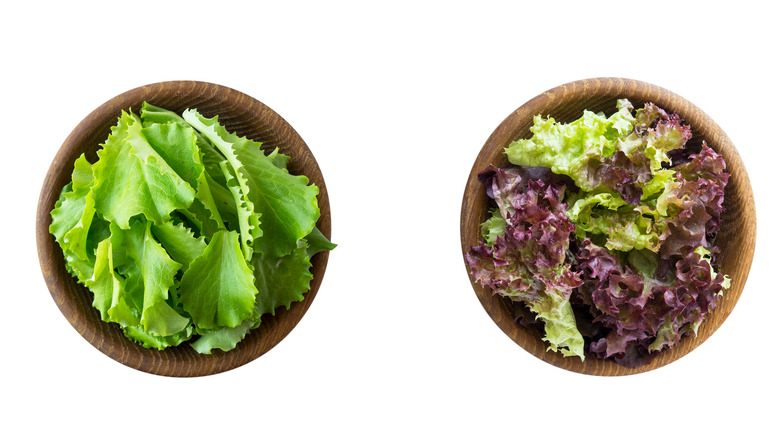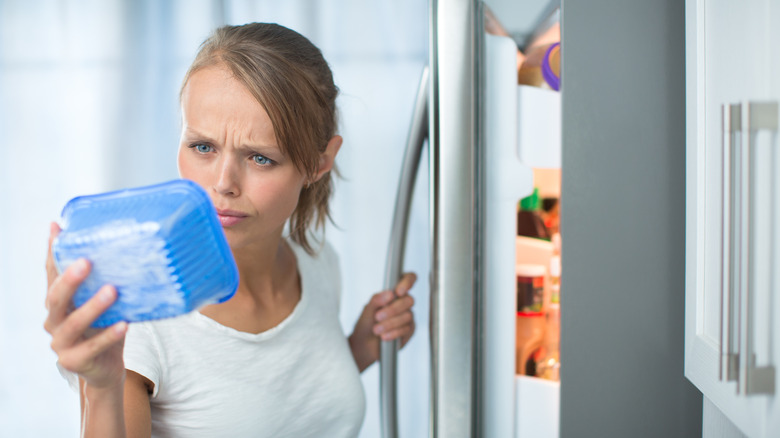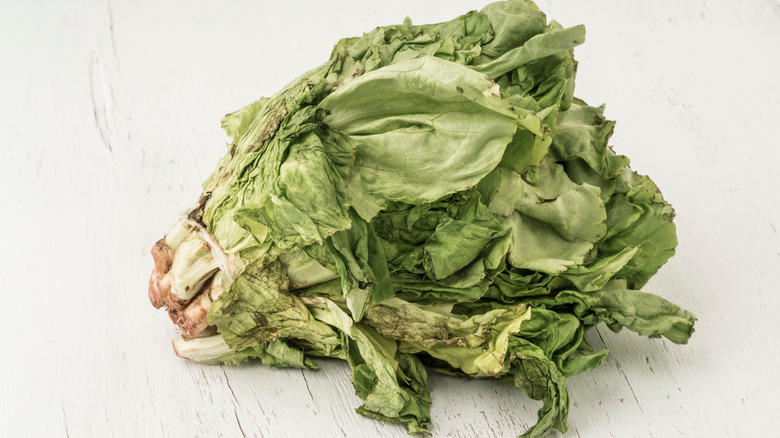How To Tell If Lettuce Has Gone Bad
Lettuce is the little leaf that can bind so much together. Not only can it be the body of a salad, the heart of a sandwich, or the skin of a wrap, it can also dress your burger or add a little green to your taco. Lettuce is a vitamin-packed, crunchy delight that your body will thank you for with every bite. And there are many varieties of lettuce including romaine, Boston, iceberg, arugula, and friseé (via Epicurious).
But as with any food, if you eat it past its prime you may soon find yourself past your own. Even though what really happens when you eat expired food can vary, according to the Center for Disease Control, leafy greens are vulnerable to contamination from bacteria even at the best of times. Should your leaves go bad, the risks of contracting foodborne illness will only grow. If you know what to look for, however, you can save yourself from the pain and the trouble that can arise from eating food that is past its prime. Below are some of the easiest ways to tell if your lettuce has expired.
Check the expiration date
There are foods that surprisingly never expire, but lettuce isn't one of them. The best way to ensure you aren't eating expired lettuce is to check the expiration date. If you are eating packaged lettuce, there will be a "Best By" date printed somewhere on the container. If the date printed already happened, you may opt to toss the lettuce rather than eat it.
However, according to MSNBC, "Best By" dates imply the day that a product passes its most fresh state, erring on the side of quality, not safety. As lettuce lasts between seven to 10 days from purchase (via Food Network), a good rule of thumb would be to not eat lettuce that is three to four days past the "Best By" date printed on the packaging.
Avoid wilted and sour smelling lettuce
If the lettuce is well-past its "Best By" date, but looks, smells, and feels perfectly edible, is it safe to eat? And what if you bought a head of lettuce fresh from the market without packaging to guide you to safety? Fortunately, there are many signs your food has gone bad, and if you know what to look for, they're all easy to spot.
According to Livestrong, your eyes and your nose should be enough to tell you whether your lettuce is safe to eat. Is it wilting and overly soft? Does it appear slick and slimy? Does it smell rotten? Are the leaves browned, blacked, or reddened? If any of the above are present, consider that the lettuce has gone bad. Following these guidelines should help you determine whether or not your lettuce is safe to eat.


